Axolotls seem like creatures that time has forgotten. They are salamander-like amphibians that seem to never truly grow up. No wonder some people have nicknamed them the “Peter Pan of Salamanders.”
Though they grow wild in one place near Mexico City and are considered critically endangered, there are many more living in laboratories and as personal pets in aquariums around the world.
Axolotls in the wild only come in a few dark and drab colors. Thanks to selective breeding and experimenting, there are now over 20 types of axolotl color variations or morphs found in captivity.
How Are Axolotl Morphs Created?
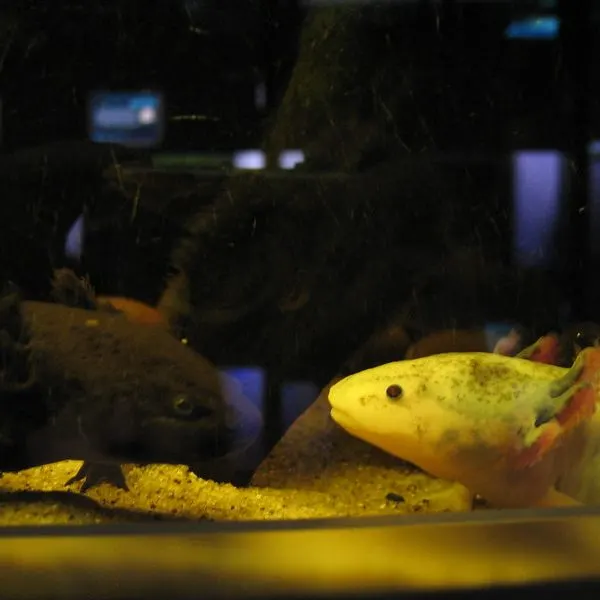
Axolotls come with three different types of chromatophores, these are what give them their color. Baby axolotls will get their color from both of the parents; one gene from each.
So, depending on the parents’ colors and the dominant traits, different types of axolotls can be selectively bred.
What Are the Different Axolotl Morphs?
| Morph Type | Rarity | Approximate Cost |
| Albino | Common | $80 |
| Black Melanoid | Common | $100 |
| Chimera | Extremely Rare | N/A |
| Copper | Uncommon | $100 |
| Dirty Lucy | Common | $80 |
| Enigma | Extremely Rare | N/A |
| Firefly | Very Rare | N/A |
| Golden Albino | Common | $80 |
| Green Fluorescent Protein (GFP) | Uncommon | $200 |
| Heavily-Marked Melanoid | Uncommon | $120 |
| High Iridophore | Rare | $130 |
| Lavender | Rare | $215 |
| Leucistic | Common | $100 |
| Mosaic | Very Rare | N/A |
| Piebald | Rare | $300 |
| Red Fluorescent Protein (RFP) | Very Rare | N/A |
| RLG | Rare | Varies according to morph |
| Clear Axolotl | Rare | $120 |
| White Albino | Common | $90 |
| Wild Type | Common | $70 |
1. Albino

These axolotl morphs have white or even translucent skin like other albino animals.
They also have pink or red eyes and gills. Although they are considered albinos, some of these morphs will still have light-colored speckles or even grow to be a light shade of golden or yellow.
2. Black Melanoid

These dark axolotls can come in a completely black coloration or appear lighter from dark gray to dark green.
They usually have dark purple gills and often a lighter belly. Black melanoid axolotls are solid colored and don’t produce any iridescent colors like many other morphs.
This axolotl morph is able to change its color depending on the color of the substrate in its tank. If you have a dark substrate, it will deepen its colors, and if you have a white or lighter colored substrate, the axolotl will lighten as well.
The amazing thing about this color change is it’s not permanent. When you change your substrate, the color of your axolotl will adjust to the color of the ground covering.
3. Chimera
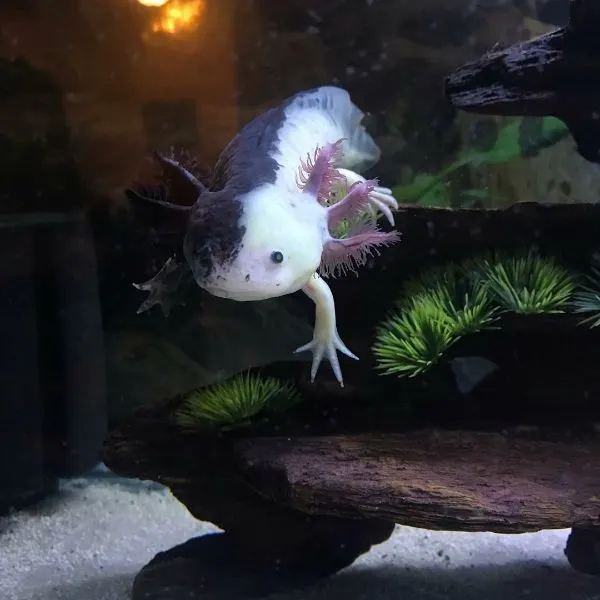
Some axolotl enthusiasts don’t consider the chimera to be a true morph because they are so exceedingly rare and come from birth defects rather than selective breeding.
Chimeras will have one morph on one side of their body and a completely different morph on the other side. They look like they were split in half and two separate axolotls were fused back together.
This rare variation happens when two developing eggs fuse together to form one individual. Sort of like the conjoined twins of the axolotl world. What makes this type of axolotl even rarer is the fact that most of these don’t survive infancy if they even develop at all.
Because of how they are created, Chimera axolotls tend to have a lot of health problems. Since they are basically two different individuals combined into a single unit, one side can grow faster or develop differently than the other.
On the exceedingly rare chance, that they survive into adulthood, chimeras are usually one-half white, and the other half black.
4. Copper
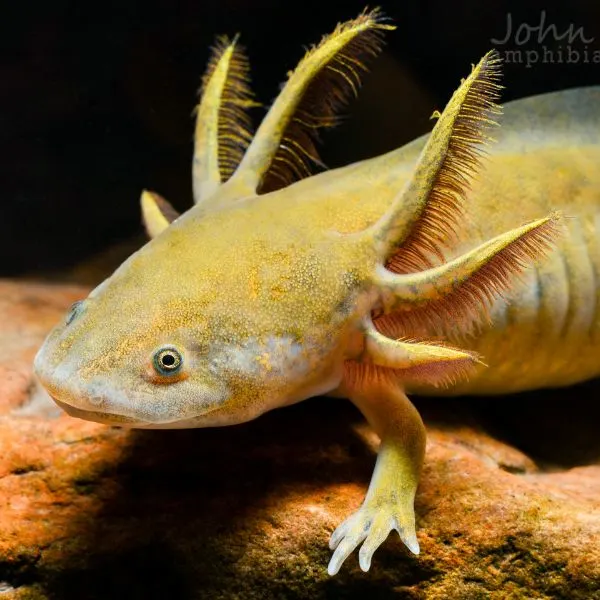
Copper axolotls are actually a form of albino, but they have genes that allow some colors to appear on the skin. These morphs come with translucent skin with patches of copper, light brown, or olive. Copper axolotls often have specks of gold, brown, or pink as well.
Because of the present albinism, these axolotls retain their pink-reddish eyes, along with gray irises, and pink gills. They also do not have any dark colors like black, dark brown, or dark gray.
These color morphs are popular in the United States and Australia where they originated but are rare in other countries.
5. Dirty Lucy
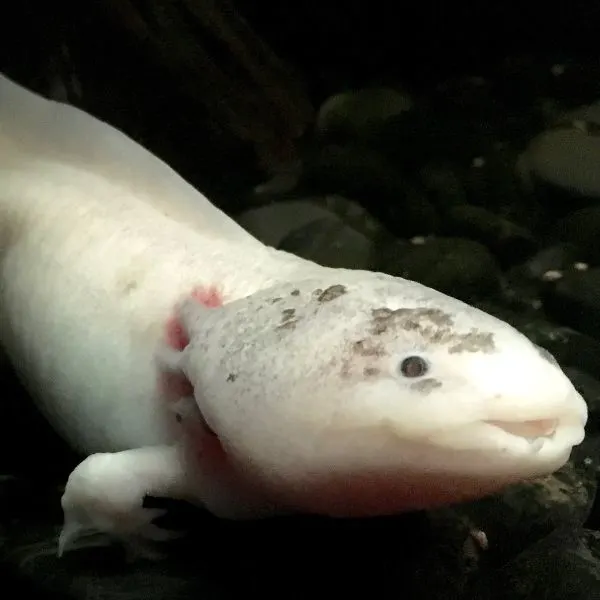
Is short for dirty leucistic and is also known as the speckled Lucy. This morph is predominately white with a few clumps of dark brown or black spots. The resulting appearance makes them look like they are dirty. Hence the name.
The leucistic trait is very similar to albinism because there are reduced chromatophores in the body. Albinos are still different because they cannot produce the dark colors that leucistic can.
A dirty Lucy axolotl can have iridescent sparkles on its face and body, again, albinos don’t have that trait.
6. Enigma

The enigma morph lives up to its name because there is very little that is known about it. So far, only one breeder has come up with this morph, so this variety may end up being a lone legend.
This extremely rare axolotl changes its color as it ages. It started off nearly all black, but soon it had changed to a yellowish-green coloration.
As it continued to grow, it kept a dark gray color on top, but its belly lightened to almost white. Along with the dark skin are patches of glittering, iridescent gold that can appear green in certain light.
It has kept the typical pink gills, and these are accented by golden-colored eyes.
Maybe more breeders will stumble across this rare morph and the enigma will become more common, but for now, these are one of the rarest axolotl morphs in the world.
7. Firefly
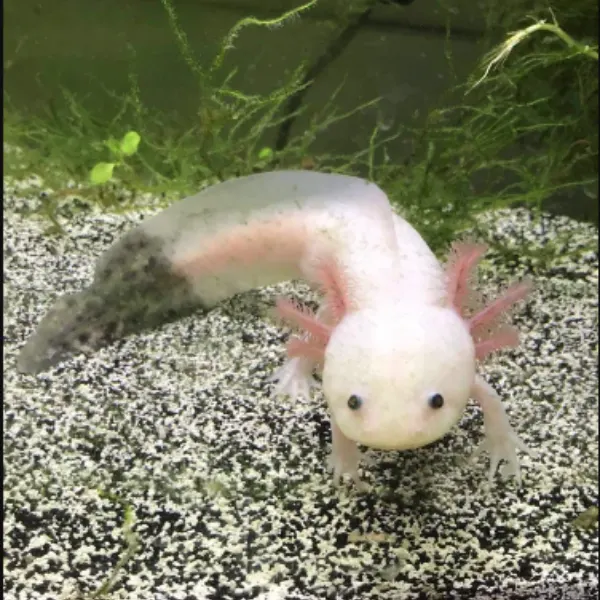
These morphs are another type that can’t be bred into existence. The creation of these axolotls has some controversy surrounding them because they are created in laboratories using a process called embryonic grafting.
While these axolotls are in the embryonic stage, their original tails are removed and an albino tail that glows bright green is attached. Under a blacklight, only the tail glows brightly making the axolotl resemble a firefly.
These “artificial” morphs can’t be bred, they have to be manufactured so they are very rare as well. If you were to find one for sale, you could be expected to pay over $1000 for it.
Firefly axolotls can have any color body, but they will have a green fluorescent protein tail that glows under blacklights.
8. Golden Albino
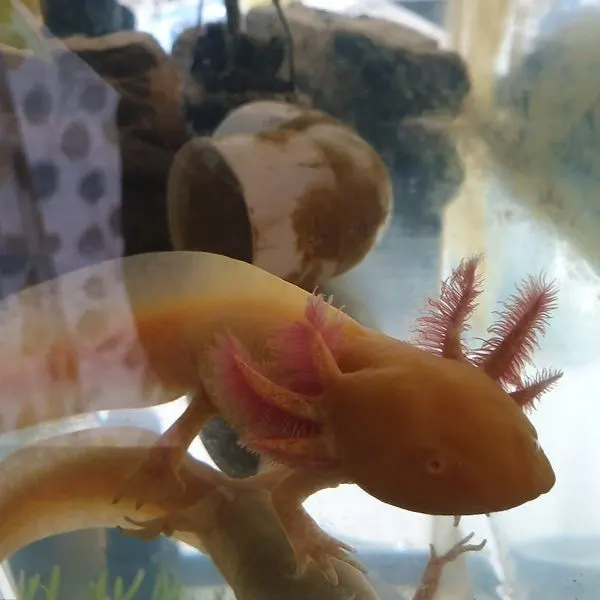
These axolotls are nearly impossible to tell apart from albinos while they are still babies because they are born white or translucent. It isn’t until they reach the juvenile stage that orange, golden, or yellow hues start to glow upon their skin.
Though they can be varying shades, gold is the most common color. Their entire body may not be covered though. They could have patches of white, speckles, or even iridescent spots that make them sparkle in the light.
Unfortunately, because of their albino eyes, these morphs are sensitive to bright lights and often end up with vision problems.
9. Green Fluorescent (GFP)
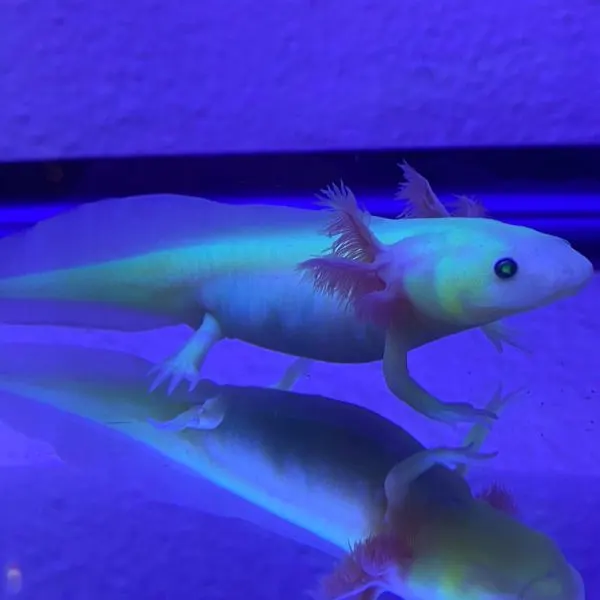
These axolotls are quite unique because they will glow bright green under blacklights. The albino types of these axolotls are used to create firefly morphs.
The GFP morph was created in labs by scientists that were studying the axolotls ability to regenerate body parts. The green fluorescent protein came from jellyfish genes and was spliced into axolotl DNA artificially.
Eventually, this morph landed in the hands of private breeders, and now they are more common.
GFP axolotls can be any body color, but they will glow green under a black light. The lighter the original color, such as leucistic or albino, the brighter they glow under a blacklight.
When breeding GFPs the glow trait can be passed on to their offspring.
10. Heavily-Marked Melanoid
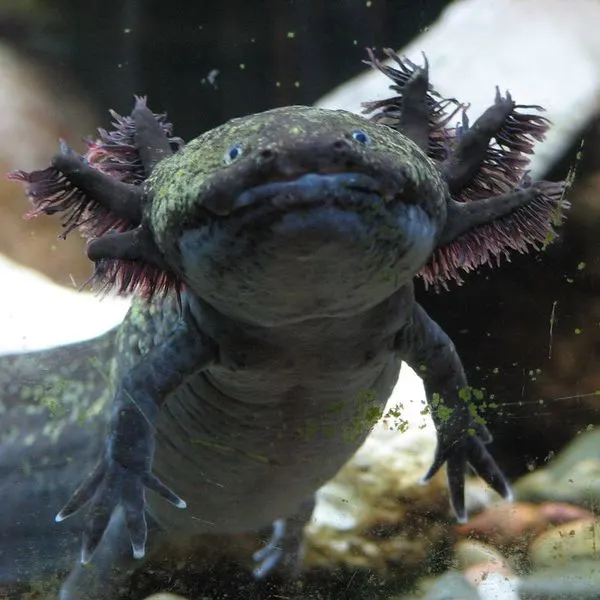
This morph is a variation of the black melanoid axolotl. These morphs still have very dark black to dark gray skin, but with splotches of light green to yellow.
Not much is known about this particular morph because it has only happened a few times and it does not appear to be a predictable trait. Heavily-Marked Melanoid morphs seem to be happy little accidents.
11. High Iridophore

Iridophores are the pigment-producing chromatophores responsible for creating shiny, iridescent sparkles. These morphs can be any body color, but they will have random patterns of bright, reflective spots.
Because of the reflective quality of these morphs, they often appear much brighter than other axolotls. Though the iridescent patches can appear all over the body, they often seem to be most concentrated on the back and tail.
Their gills will retain the color related to the original morph. If it is a black melanoid for example, it will retain the same dark-colored gills, but have patches of bright iridescence along its body.
12. Lavender
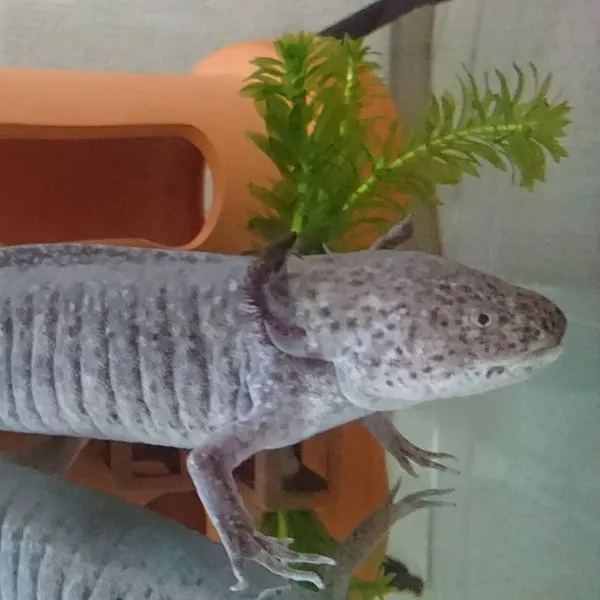
The lavender axolotl is often called the Silver Dalmatian axolotl because of spots that show up across its skin. This coloration is a very rare morph as the light purple color doesn’t appear very often, even through selective breeding.
Their skin can range from dark purple to silvery purple, but most of them have silver to dark gray spots like a Dalmatian. Some lavender-colored axolotls can eventually change color as they age, morphing to gray or green, but most tend to stay the same lavender color.
The silvery speckles are a very sought-after color, so expect to pay quite a bit for one of these beauties. To top off their stunning colors, these axolotls tend to have dark black eyes that glitter like obsidian, and ruby red gills.
Some lavender axolotls tend to have lighter undersides and very light legs that darken as they get closer to the body.
13. Leucistic
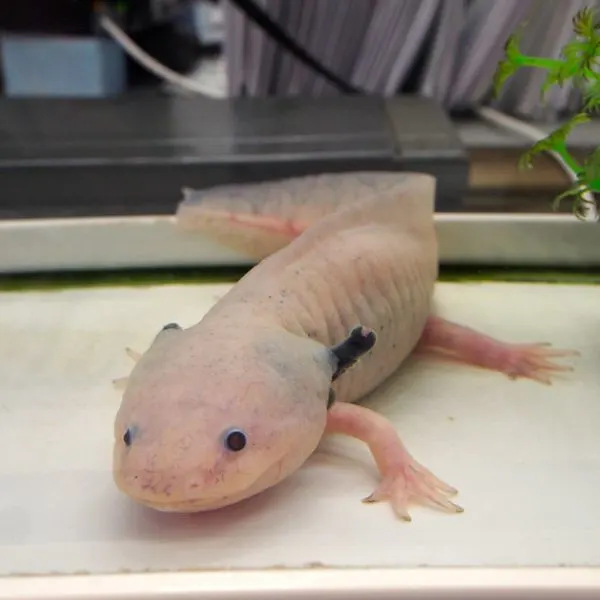
Leucistic axolotls or Lucy for short are similar to albinos because they often have light-colored, almost translucent, or pink skin, and pink gills. Where albino axolotls have red or pink eyes, Lucy’s have black or dark blue eyes.
Along with the lighter-colored bodies and striking dark eyes, some leucistic axolotls have patches of dark spots. These spots tend to show up around their faces and fade away completely as they get closer to the body.
14. Mosaic

The mosaic morph of the axolotl is another fusion of two separate eggs, though not exactly down the middle like the chimera axolotl. These morphs display a color combination resulting from both the eggs combining into one single organism.
These morphs have unique colors, whirls, and patterns that can’t be replicated by breeding. They may have black and white colors or pick up flecks of golden sparkles with red or olive stripes. The combinations won’t be the same because of how they combine together.
Mosaic axolotls can even have different colored eyes, and the mottling can continue up to the gills. Most other axolotls have solid-colored gills, or occasionally some golden or silvery sparkles.
Mosaic morph axolotls are some of the most striking because of their unique and often dramatic colorations so they are highly sought after. Breeders who accidentally make a mosaic often keep them, or sell them to high-paying bidders, so don’t get your hopes up on owning one of these little beauties.
15. Piebald
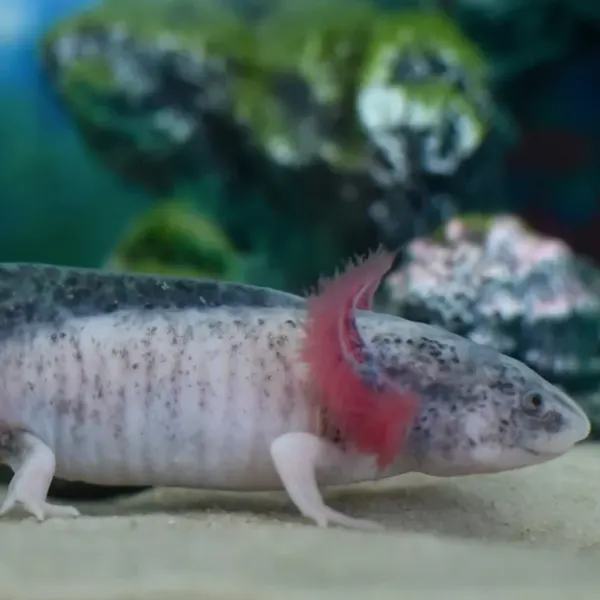
Those axolotl owners that really want a rare mosaic but can’t find one anywhere might be able to settle for a piebald morph. These axolotls can have similar patterns to the mosaic, but their alternating color splotches don’t typically go all the way to the tip of the tail like a mosaic.
Piebald axolotls are typically white with dark colored or black patches along the top of the body. The patterns usually start on the face and fade as they go back. They can have red gills and dark blue or black eyes like the Lucy morphs.
These morphs have bigger patterns and patches of darker colors, unlike speckled varieties. As the piebald axolotl ages, the dark patches can darken. You may end up with a beautiful black and white axolotl once it reaches maturity.
These axolotls are pretty rare, and the coloration is another that is highly sought after. Though this pattern of white skin with bold patterns of a darker color can be inherited from parents, it’s rare to be passed on.
Because of these traits and the rarity of the morph, piebalds can get pretty expensive.
16. Red Fluorescent (RFP)
Just like the Greed Fluorescent Protein morphs, the RFP was created in a lab.
Instead of glowing green when exposed to a black light, these glow orange or red. Again, these can be any morph or breed of the axolotl, but they will glow a shade of red under UV lights.
These axolotls have had their genes modified to produce the red glow and so far, are only used for research. They have not been allowed into the breeder’s hands yet. Because of this, there is very little information on the morph.
17. RLG

While this may not be a true morph and more an adaptation, the RLG morph stands for Really Long Gills. Adult axolotls that have gills that are from 1½” to 2” inches long are considered an RLG morph.
These axolotls can be any kind of morph, color, or pattern, they only need long, frilly gills that wave languidly in the soft currents of the tank.
18. Clear Axolotl
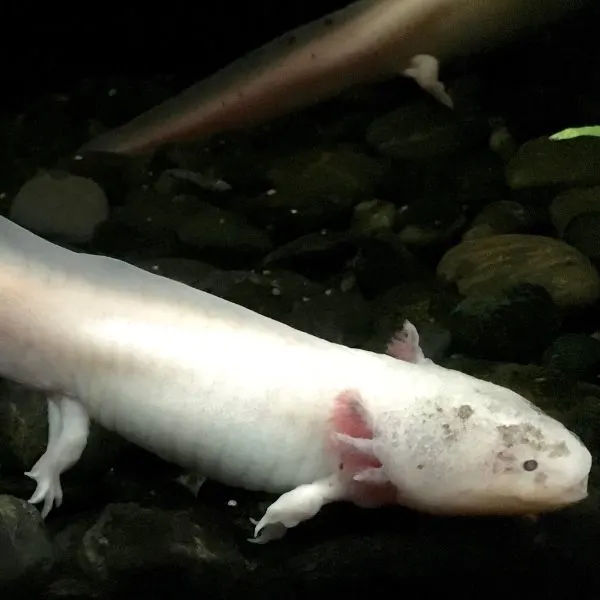
This morph of axolotl has absolutely no coloring in its skin. It may be so translucent that you can see the organs underneath. They are close to albino axolotls except for the level of translucence.
The only color you may see on these beside the organs underneath might be the blood that flows to the gills and through its body.
19. White Albino
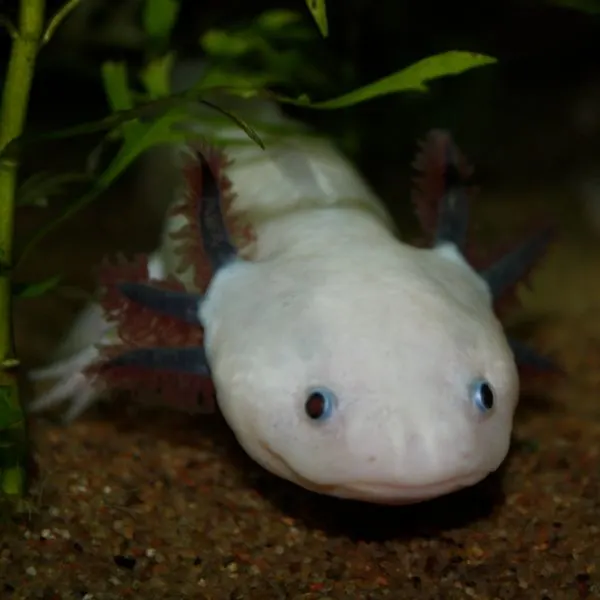
This type of axolotl is very similar to the Leucistic because of the white-colored skin, except they are albinos and have pink to red gills and the tell-tale albino pink eyes.
These axolotls don’t have any chromatophores in their skin, but they may have a few iridophores in the gill stalks. These are responsible for creating golden flecks along the gills, but they don’t show up anywhere else on this morph.
White albinos also have sensitive eyes, so if you have any albino axolotls, keep them out of direct sunlight, give them a place they can shelter from the light if they need to, and only keep a dim light on the tank.
20. Wild Type
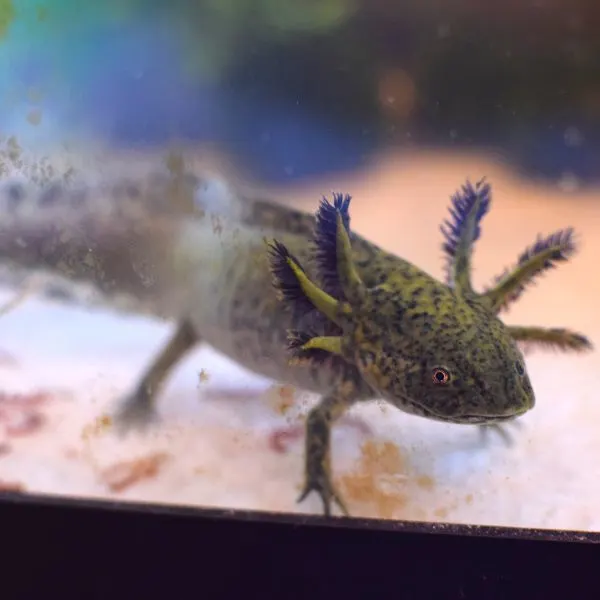
These axolotls aren’t labeled wild because of their crazy party lifestyle, it’s because they have colorations similar to ones found in the wild. This coloration is the most common and will be the least expensive.
Wild Type axolotls typically come in colors such as dark gray, dark green, black, and brown, but may have a varying degree of speckling and iridescence since they have all the different chromatophores in their skin they can have a varying degree of patterns and coloring.
They are usually dark colored to help them blend in with their natural surroundings in the muddy lake waters near their origin of Mexico City.
They can have different patterns and intensities of iridescence as well. Their eyes are usually dark colored with golden-colored irises.
Their bellies are lighter than the top of their bodies. Gills on Wild Type axolotls are a deep purple color.
Where to Find Axolotls
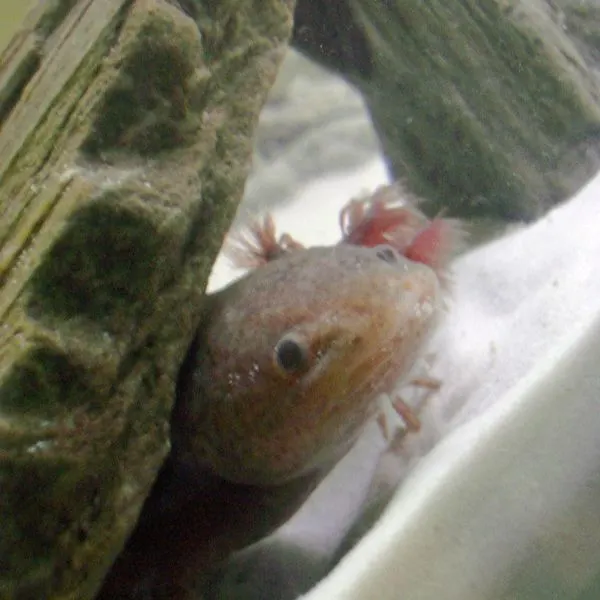
Axolotls are becoming more popular for pet owners, but not all pet stores will have them on hand all the time. There are plenty of breeders online if you do a quick search, but here are a few that are reputable and have high customer satisfaction ratings.
If you can find an axolotl dealer in your local area you will likely pay much less than you would buying them and having them shipped to your residence. Shipping live animals is a costly process that can have plenty that could go wrong.
Also, as we searched for prices on axolotls, we noticed that prices for these pets—like most everything else—have been increasing.
Only a year or two past, axolotls were regularly found in the $30 to $40 range. Now I have had a hard time finding any below $65 each.
These three online axolotl dealers all have high ratings, great reviews, and seem to take care of their animals.
Josh’s Frogs is a company that started out in a small garage in 2004. Since then, they have grown much larger because of outstanding customer service and providing quality pet supplies and healthy pets.
Fantaxies is all about the cute little axolotl and has a constantly changing stock of different axolotls. They are very highly rated and have a lot of glowing customer reviews.
Final Thoughts
The little axolotl is a fascinating creature that can come in so many gorgeous and unique colors and variations depending on how they are bred. They can have colors reminiscent of the earth and muddy water, they can glow bright green, or have any number of colors under the rainbow.
The main thing is to find what appeals to your eyes and heart. Axolotls are smiling little amphibians that can provide you with years of happy pet ownership regardless of coloring, patterns, or whether they glow or not.
But I have to admit, that is a really cool trick some of them can do.
More Axolotl stuff
